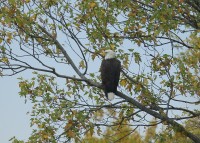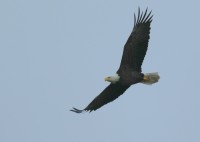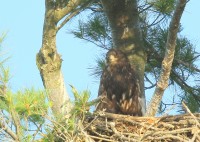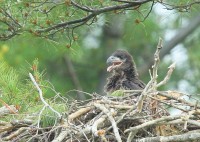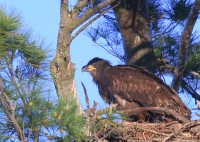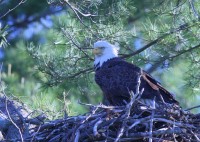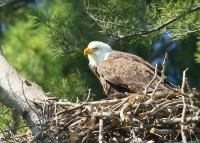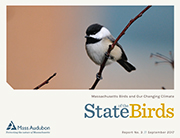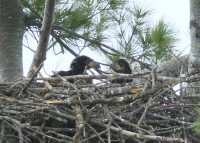 Once the bald eagle has reached the stage where its secondary down is beginning to be replaced, it is called a juvenile. From the fourth to the eighth week, the juvenile bald eagle continues to grow at a rapid rate. It continues to molt, losing its secondary down and gaining the feathers or plumage of the juvenile eagle. The plumage of the juvenile eagle is far less striking than that of the adult eagle. It appears to be a dark grayish brown. The coloring of the juvenile bald eagle is very similar to the coloring of the adult golden eagle.
Once the bald eagle has reached the stage where its secondary down is beginning to be replaced, it is called a juvenile. From the fourth to the eighth week, the juvenile bald eagle continues to grow at a rapid rate. It continues to molt, losing its secondary down and gaining the feathers or plumage of the juvenile eagle. The plumage of the juvenile eagle is far less striking than that of the adult eagle. It appears to be a dark grayish brown. The coloring of the juvenile bald eagle is very similar to the coloring of the adult golden eagle.
The physical changes that the juvenile eagle undergoes in its growth from youth to adulthood can be described as moving from muted, darker, all-one-color shades to the striking high-contrast colors of the adult.
For example, the juvenile’s eyes progress from a dark brown, to a lighter brown, to a cream to its adult coloring of yellowish white. The bald eagle’s beak and cere transfrom from a dark black or gray to a mixture of gray and black to a mixed yellow and gray to the adult vibrant yellow. Its head feathers are dark brown to black in the juvenile but get progressively lighter brown and gray until they turn a dirty gray just before achieving the brilliant white head feathers of the adult bald eagle. The lower breast of the juvenile is a dark brown which becomes molted and then returns to a very dark brown in the adult. The tail changes from black with gray near the vane to a mixed gray and black to a final pure white in the adult eagle.
The size of the juvenile bald eagle is remarkable in that it is actually larger than the size of the fully grown adult bald eagle. This is because the plumage of the juvenile bald eagle is actually longer and thicker than that of the adult bald eagle. The adult bald eagle is more streamlined with fewer and shorter feathers than the juvenile. This streamlining contributes to the more graceful flight of the adult bald eagle. The longer feathers tend to make the juvenile eagle a bit clumsy in flight.
Chicks
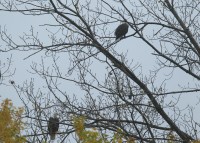 The bald eagle adult pair continue to be seen perched together along the North Andover side of the Merrimack River. They were in perch mode both this morning and late afternoon with overcast skies, winds this morning blowing 20 mph+ and gusting to 25 mph and then late afternoon blowing 25+ and gusting up over 30 mph. Late afternoon heavier rain and fog.
The bald eagle adult pair continue to be seen perched together along the North Andover side of the Merrimack River. They were in perch mode both this morning and late afternoon with overcast skies, winds this morning blowing 20 mph+ and gusting to 25 mph and then late afternoon blowing 25+ and gusting up over 30 mph. Late afternoon heavier rain and fog.
